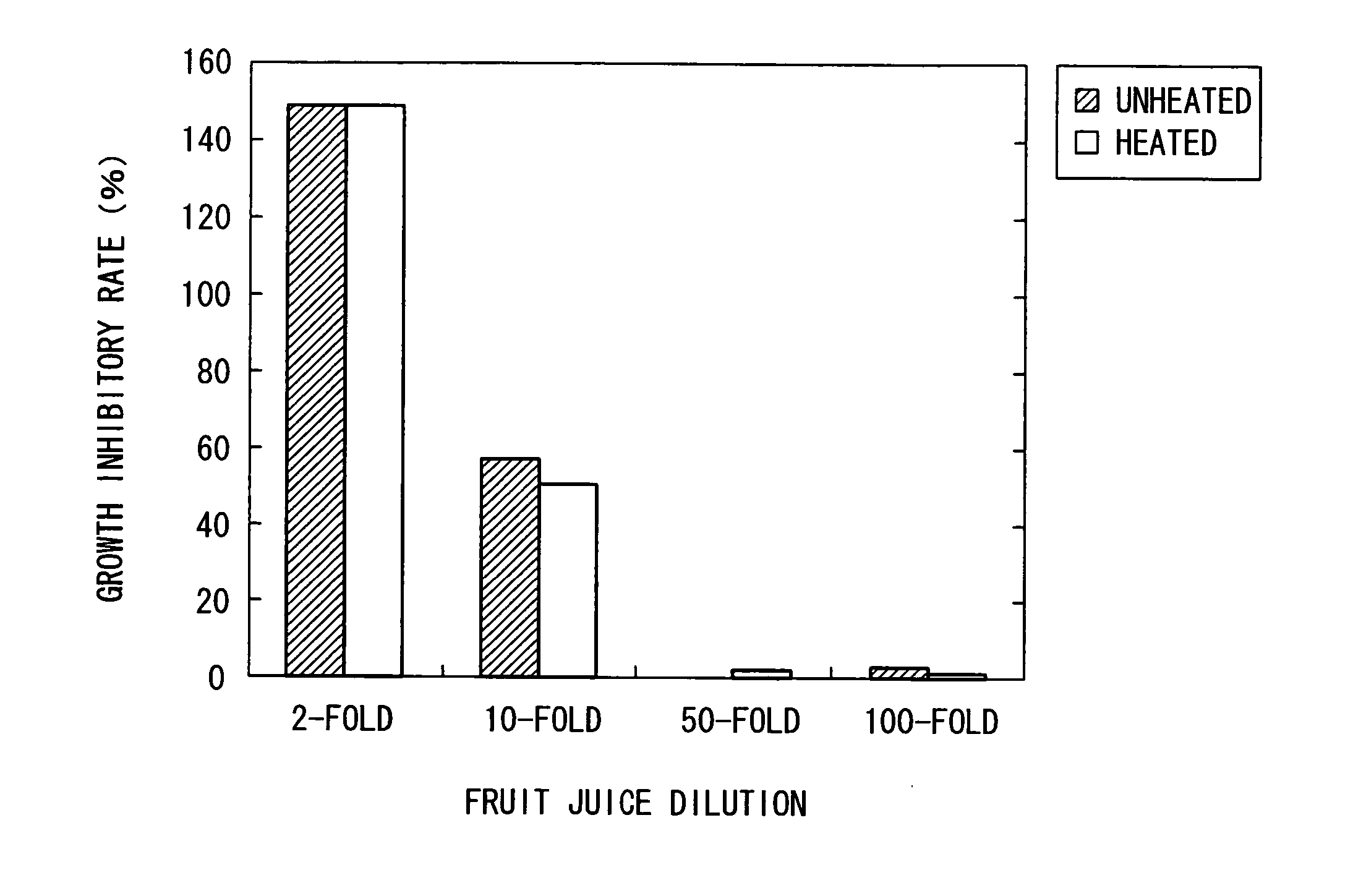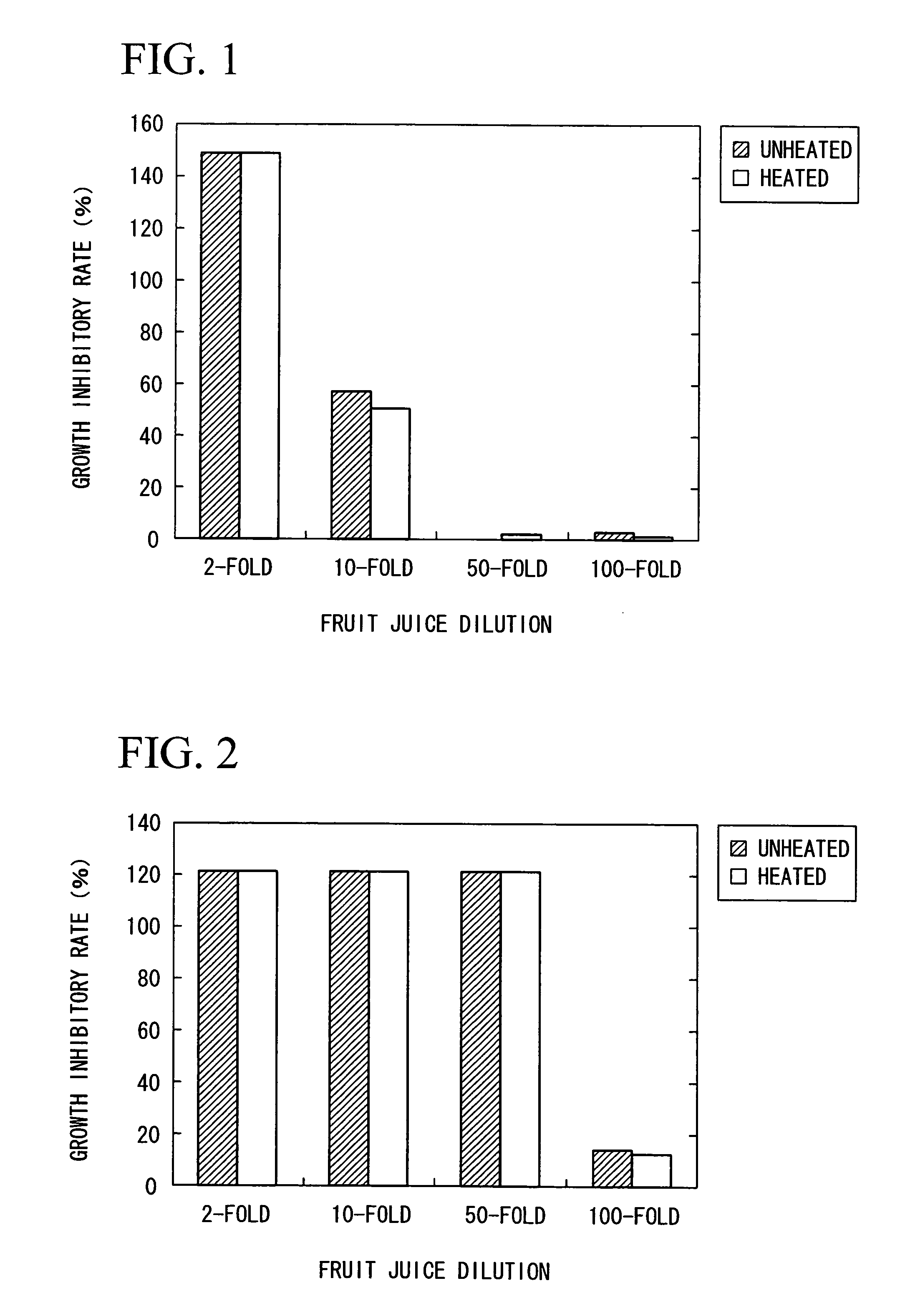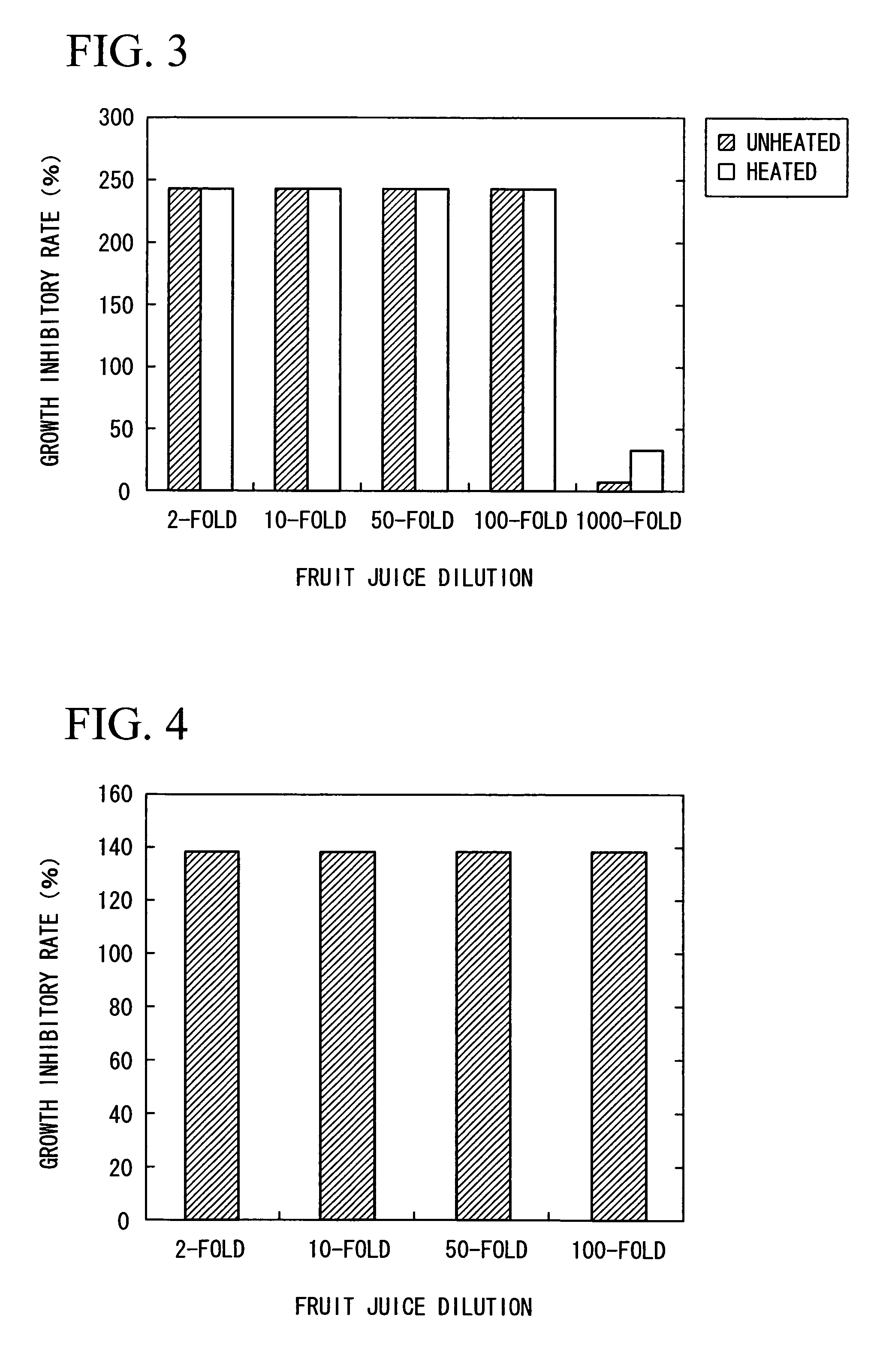Bacterial growth inhibitor or bacteriostatic agent utilizing substances derived from acerola fruit
a technology of acerola fruit and growth inhibitor, which is applied in the field of bacterial growth inhibitor or bacteriostatic agent derived, can solve problems such as lowering food quality, and achieve the effect of superior inhibition or blocking of the growth of thermo acidophilic bacilli
- Summary
- Abstract
- Description
- Claims
- Application Information
AI Technical Summary
Benefits of technology
Problems solved by technology
Method used
Image
Examples
example 1
[0055] Next, a specific description of the present invention using examples is given.
Bacterial Growth Inhibiting / Blocking Effect of Acerola Fruit Juice
[0056] 843.3 g of acerola fruit was washed with sterile water, and the calyxes thereof were removed. Then, they were squeezed using a bleached cotton cloth that had been sterilized under high-pressure at 121° C. for 15 minutes, and 637.6 g of the obtained juice was used as the acerola fruit juice solution. A part thereof was heat-treated at 80° C. for 10 minutes, and then used as the heat-treated solution. Meanwhile, a strain of Alicyclobacillus acidoterrestris (ATCC 49025) was cultured in a YSG medium (yeast extract 0.2%, glucose 0.1%, soluble starch 0.2%, pH 3.7) at 50° C. for 6 to 8 hours, until the bacterial growth came to the middle to late period in its logarithmic growth (the turbidity at 660 nm was 0.5 to 0.6), and this bacterial solution was used as the bacterial suspension. Next, a predetermined amount of the heat-treated...
example 2
Bacterial Growth Inhibiting / Blocking Effect of Acerola Fruit Juice with Respect to Bacteria Belonging to the Genus Alicyclobacillus
[0061] Substantially the same experiment was performed on the following strains, and the bacterial growth inhibiting / blocking capability of the acerola fruit juice (heat-treated and not heat-treated) was examined.
[0062]Alicyclobacillus acidocaldarius (ATCC 27009)
[0063]Alicyclobacillus cycloheptanicus (ATCC 49029)
[0064]Alicyclobacillus herbarius (DSM 13609)
[0065]Alicyclobacillus hesperidum (DSM 12489)
[0066]Alicyclobacillus acidiphilus (DSM 14558T)
[0067] The results are shown in FIG. 2 to FIG. 6.
[0068] As is apparent from these graphs, the acerola fruit juice showed bacterial growth inhibiting / blocking capability with respect to many types of strains belonging to the genus Alicyclobacillus.
example 3
Preparation of Solid Contents of Acerola Fruit Juice
[0069] 1 kg of acerola fruit originating from Brazil was squeezed, and separated into fruit juice and residue. The residue was washed with 1 L of distilled water. This washing solution and the fruit juice were mixed, and then freeze-dried to obtain 80.4 g of powder. The powder is called “solid contents of acerola fruit juice” hereinafter. Ingredient analysis results of the solid contents of acerola fruit juice were as follows.
[0070] Glucose: 26.4%
[0071] Fructose: 29.7%
[0072] Vitamin C: 22.3%
[0073] Malic acid: 10.5%
[0074] Total polyphenol 0.71%
The total polyphenol content was measured by the Folin-Denis method.
Experiment with Respect to Bacterial Growth Inhibition by Solid Contents of Acerola Fruit Juice
[0075] The solid contents of the acerola fruit juice prepared above were dissolved in distilled water to obtain aqueous solutions having concentrations of 0.2, 0.4, 1.0, and 2.0%. 3 ml of each aqueous solution was poured ...
PUM
 Login to View More
Login to View More Abstract
Description
Claims
Application Information
 Login to View More
Login to View More - R&D
- Intellectual Property
- Life Sciences
- Materials
- Tech Scout
- Unparalleled Data Quality
- Higher Quality Content
- 60% Fewer Hallucinations
Browse by: Latest US Patents, China's latest patents, Technical Efficacy Thesaurus, Application Domain, Technology Topic, Popular Technical Reports.
© 2025 PatSnap. All rights reserved.Legal|Privacy policy|Modern Slavery Act Transparency Statement|Sitemap|About US| Contact US: help@patsnap.com



